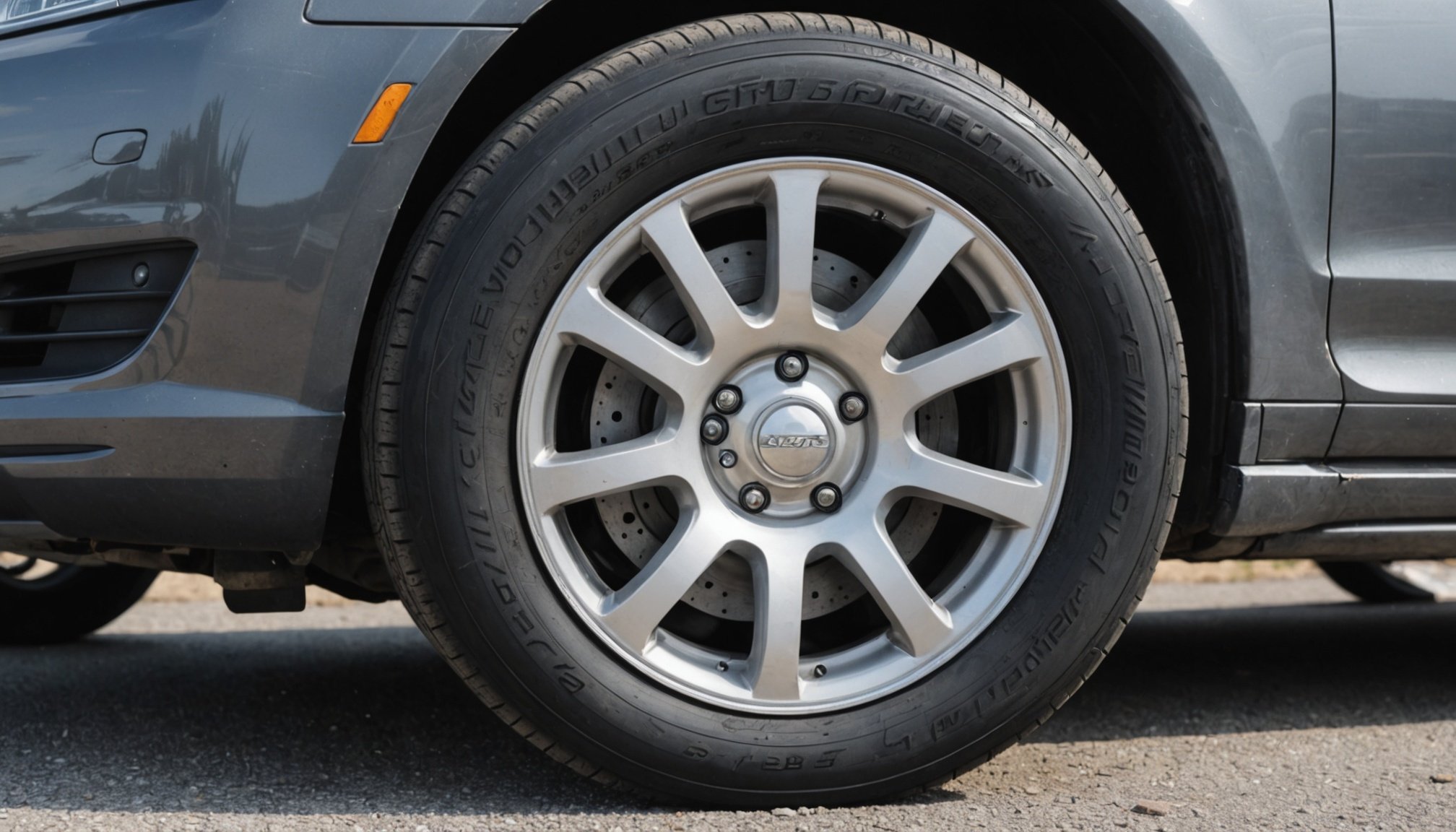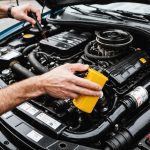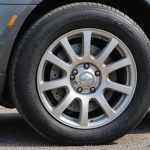In the realm of vehicular safety, few components are as integral yet often overlooked as the humble tire. Your vehicle‘s tread serves as the critical interface between your car and the road, dictating the quality of your driving experience and, more importantly, your safety. As time progresses, the wear on your tires can lead to worn or even bald tread, jeopardizing your auto‘s ability to handle various conditions. In this comprehensive analysis, we delve into the pressing implications of traversing the roads with worn-out tires, emphasizing the paramount importance of maintaining optimal pressure and tread depth. Through this discussion, we aim to heighten your awareness of the profound impact that tire condition has on driving performance and safety.
The Silent Erosion of Tire Tread
Many drivers pay little heed to the gradual degradation of their tires, often underestimating the subtle yet significant role tread plays in maintaining control and stability. The wear process is insidious, creeping in unnoticed, until the tread depth reaches a critical point where it can no longer effectively channel water away or grip the road surface. Worn tires may seem innocuous, yet the implications of neglecting them are far-reaching.
This might interest you : How can I ensure the safety of my vehicle during winter driving conditions?
A critical element of tire functionality lies in its tread design. The intricate patterns are crafted to ensure maximum traction on varying surfaces. As these patterns erode due to wear, their ability to provide effective traction diminishes, especially in wet or icy conditions. The tire’s capacity to pump water away from the contact patch is compromised, increasing the risk of hydroplaning—a phenomenon where water builds up under the tire and lifts it off the road surface.
The ramifications of hydroplaning can be catastrophic. When a vehicle loses traction, it also loses its ability to respond to steering, braking, and acceleration inputs, essentially turning it into a sliding projectile. In the flash of a moment, control is wrested from the driver, leaving them at the mercy of the laws of physics. The true peril lies in the unpredictability of such events, which can occur with little to no warning, particularly when tires are bald and worn.
This might interest you : What are the best practices for keeping children safe while driving?
Thus, the importance of monitoring tread wear cannot be overstated. The classic penny test, where a penny is inserted into the tread grooves with Lincoln’s head upside down, serves as a rudimentary yet telling gauge. If the top of Lincoln’s head is visible, it signifies that the tread depth is less than the recommended minimum, and service is imperative.
The Hidden Dangers of Compromised Tire Pressure
Beyond tread wear, another silent saboteur of driving safety is incorrect tire pressure. Often underestimated, pressure plays a crucial role in how a tire performs and degrades over time. Tires are engineered to operate within certain pressure parameters, deviations from which can significantly impact car performance.
Under-inflated tires tend to wear unevenly, with the edges experiencing more wear compared to the center. This uneven wear heightens the likelihood of tread loss and increases the tire’s contact area with the road, inadvertently increasing friction and, consequently, fuel consumption. Moreover, under-inflation can lead to overheating, a precursor for tire blowouts, especially at high speeds.
Conversely, over-inflated tires are not without their pitfalls. They reduce the contact patch with the road, which can compromise traction and lead to a bouncy driving experience. Vehicles with over-inflated tires are more susceptible to damage from road debris and potholes, given the reduced cushioning effect.
The key to maintaining optimal tire performance is regular checks and adjustments. A tire gauge is a small investment that pays dividends in safety and performance. Checking pressure at least once a month or before long trips is a prudent practice. Service stations often offer free tire pressure checks, eliminating excuses for neglect.
In essence, proper pressure maintenance is not just about prolonging the life of your tires; it significantly contributes to ensuring your vehicle‘s safety performance. The nuances of how something as simple as pressure can impact safety underscore the intricate relationship between vehicle components and driving outcomes.
Service Habits For Tire Longevity
Proactive service habits play a pivotal role in extending the lifespan of your tires while ensuring robust safety standards. Routine maintenance can mitigate premature wear and prevent the myriad of issues associated with worn-out tires.
Firstly, rotation is an essential practice. Tires can experience uneven wear based on their position on a vehicle. Front tires, for instance, often endure more friction because they handle steering duties. Rotating your tires every 5,000 to 7,000 miles distributes wear more evenly across the tread, enhancing longevity.
Balancing and alignment should not be overlooked, either. Misalignment can lead to rapid tread degradation, pulling the vehicle to one side and making driving a laborious endeavor. Symptoms such as uneven tread wear or steering wheel vibrations signal a need for these adjustments, which are best handled by professionals.
The road environment is an unpredictable variable affecting tire health. Potholes, sharp objects, and curbs can cause unseen damage that escalates over time. Regular inspections, particularly after encounters with rough terrains, help in identifying and addressing issues before they escalate.
Finally, keeping an eye on the tread depth as previously mentioned is fundamental. It’s the ultimate indicator of when service is due. Tire manufacturers often provide specific guidelines on how frequently tires should be replaced, generally every six to ten years regardless of wear and tear. Heeding these timelines ensures that your tires do not become a liability.
The Broader Impacts of Tire Negligence
The implications of neglecting tire health extend beyond the immediate safety concerns. Driving with worn-out tires can have broader ramifications on your vehicle’s overall performance and your financial wellbeing.
Firstly, there’s the environmental aspect. Tires with improper pressure or excessive wear increase fuel consumption, leading to higher emissions. In a world increasingly conscious of carbon footprints, maintaining tire efficiency contributes to a more sustainable driving practice.
Economically, the frequent replacement of tires due to negligence incurs avoidable costs. Regular maintenance, while requiring an upfront investment, is far more cost-effective in the long run. Additionally, ensuring your tires are in good condition helps in preserving other vehicle components, such as the suspension system, which bears additional strain when tires are compromised.
There’s also a legal dimension to consider. Many jurisdictions have regulations regarding minimum tread depth and tire condition. Failure to adhere to these can result in fines or penalties, not to mention potential liability if an accident occurs due to neglect.
Finally, in terms of performance, tires influence everything from brake efficiency to traction control. Worn tires compromise the precision of your vehicle’s response to dynamic road conditions, which can be the difference between a near miss and a collision.
Thus, the message is clear: the integrity of your tires is not just about preventing accidents; it’s intrinsically linked to broader aspects of road safety, personal finance, environmental stewardship, and vehicle maintenance. Staying informed and proactive about your tire health is a responsibility that bears manifold benefits.
In the intricate dance of driving, the role of tires as the unsung heroes of safety and performance cannot be understated. Worn, bald, or improperly maintained tires transform your vehicle into a hazard rather than a means of transportation. The implications of neglecting tire health span from immediate safety risks to broader environmental and economic impacts.
As you navigate the roads, let this exploration of tire safety serve as a reminder of your responsibility not just to your own safety, but to that of countless others sharing the road with you. With routine checks, timely service, and a vigilant eye on tread and pressure, you arm yourself with the tools to assure every journey is as safe and efficient as possible. Remember, your tires may be the foundation upon which your vehicle’s capabilities rest. Treat them with the diligence they deserve.











